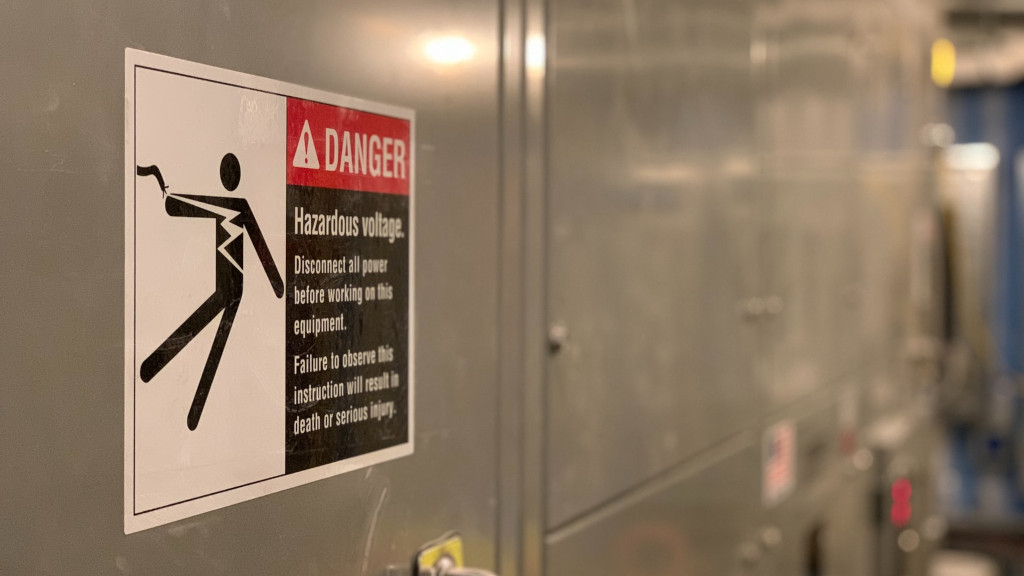What happens if the defect is an electric arc that occurs in the bars of the electrical panel?
When coordination of electrical protections is critical, for example minimizing the extent of an outage, a common design practice is to use the main circuit breaker without an instantaneous trip function and implement it on the switchgear output circuit breakers. Without an instantaneous trip, the main circuit breaker can take up to 30 cycles or 0.6 seconds depending on the short time delay setting. This allows the output circuit breaker enough time to trip first and clear the fault.
Obviously we have this problem both in Medium Voltage electrical distribution and (and it is the great forgotten when it is the most abundant, Low Voltage). But... what happens if the defect is an electric arc that occurs in the bars of the electrical panel? The 30 cycle main breaker delay would seem like an eternity in this case.
The goals of providing selective coordination by including a time delay and reducing the energy of the electrical event with fast firing times conflict with each other. If the main circuit breaker trips instantaneously, you can limit the arc flash duration to five electrical cycles (0.1 seconds). However, without an instantaneous trip, the main could take up to 30 cycles to open the breaker.
Since the total energy of an arc flash depends on its duration, a sixfold increase in duration (30 divided by 5) would result in an equal increase in energy, possibly to a level too dangerous to do any maintenance work, with the electrical panel energized, even with personal protective equipment.
The conflict between the use of a time delay for selective coordination and instantaneous tripping to reduce the duration of the electric arc led to the introduction of a new article in the 2011 edition of the NEC (National Electrical Code) in the USA . The new article, 240.87 on Non-Instantaneous Trip, states: “When a circuit breaker is used without an instantaneous trip, documentation must be available to those authorized to design, install, operate, or inspect the facility as to the location of the breaker or automatic switches”. In other words, the operation and maintenance personnel must be previously warned that this instantaneous protection does not exist. When a circuit breaker is used without instantaneous tripping, one of the following approved equivalent means must be provided:
- Zone Selective Interlock (ZSI).
- Differential protection.
- Power reduction maintenance switch with local status indicator.
What are these three means referred to and how do they help resolve the conflict?
- Zone Selective Interlocking: Also known as ZSI (Zone Selective Interlocking), this scheme allows different protection zones (main and feeders) to communicate with each other. If the fault is downstream of the output switch, it will send a signal to the main, telling it to prevent it from tripping instantly. Instead, the main timeout will be based on your other settings (usually a short time delay). This procedure is also called “Logical Selectivity”. This allows the output switch to be the first to clear the defect. However, if the fault is between the main and the output switch, the feeder does not see the event, so no restraint signal is sent to the main. In this case, it fires instantly. This allows the main to have high speed fault clearing capability for bus faults, while allowing a time delay for faults downstream of the output breaker.
- Differential Protection: The concept of this protection method is that the current flowing into a protected device must be equal to the current flowing out of the device. If these two currents are not equal, there must be a fault within the electrical box, and the relay can be configured to operate for fast interruption. Differential protection uses current transformers located on the line and load sides of the protected device, which would typically be a transformer, generator, or electrical panel bus (MV or LV).
- Power Reduction Maintenance Switch with Local Status Indicator: This “switch” allows the user to “temporarily” enable an “unintentional time delay” setting, ie an instantaneous trip. Many electrical equipment manufacturers have introduced this type of switch with their equipment. Although the switch does not eliminate the arc flash hazard, it can reduce the duration with a faster trip time. Once the live work is completed, the switch is returned to its normal position, which restores the original configuration of the device.
- It is not mentioned in the NEC, but Arc-Flash Detection systems can also be applied. Basically, these are devices that are installed inside the LV or MV panel and detect the light from the electric arc through a fiber optic installation. Typically there is a central electronic unit that receives several optical fibers that supervise various parts of the electrical panel. In the event of an arc detection, an instantaneous trip command is sent to the electrical panel's header circuit breaker.
These four methods are applied both in the world of American standards and IEC. The problem is the same and unfortunately it is an ignored problem. Let us bear in mind that there are many electrical panels installed that do not comply with the international standard IEC 62271-200, which defines the so-called IAC class “Internal Arc Class”, and therefore, this electrical risk is more relevant.
When it comes to the conflict between electrical protection selectivity and arc flash protection, each of the four methods found in this article can help provide the best of both worlds: time delay for selective coordination when it matters and high-speed firing when necessary during live work, which is work that should always be minimized./p>





